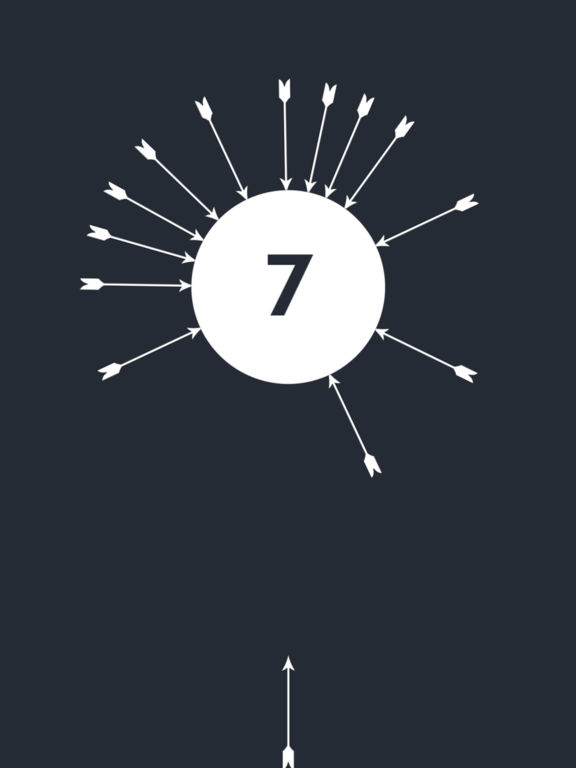

The crossed arrow indicates a failed chemical reaction, where the reaction did not yield the desired product/s.
If the reaction succeeds, the arrow changes from dashed to the chemical reaction arrow. f) Dashed ArrowĪ reaction to convert a substrate to a product is proposed using a dashed arrow, although the success of the reaction must be experimentally verified and confirmed. This electron transfer is shown by using the fishhook arrow.
#Loopy arrow free
After the bond breaks homolytically, each electron resides on one Br atom to generate two free Br. The electrons are shared equally between the two atoms. The fishhook arrow mostly appears in pairs to account for all the electrons.įor example, a homonuclear diatomic molecule, Br 2, has a two-electron covalent bond. The tail end is at the electron source, and the arrowhead is on the atom that will take the radical/electron. Unlike the curly arrow, it has a half-head (half of a spearhead) and looks like a fishhook. This single electron transfer reaction is also known as the free radical reaction.

While the curly arrow shows two-electron movement, the movement of one electron is shown using the fishhook curly arrow. The tail end of the arrow is at the electron-rich atom (called the nucleophilic centre), and the arrowhead is on the electron-deficient atom (known as the electrophilic centre). The double-headed (spearhead) curly arrow shows two electrons’ movement from one point to another.

These structural changes are represented using the curly arrows while drawing reaction mechanisms. Most organic chemistry transformations involve bond-making or breaking. However, when the reverse reaction is dominant, the length of the arrow is longer. However, sometimes, altering the reaction conditions can change the direction of the reaction favouring the formation of the reactants or the products.Ī longer forward reaction arrow indicates that the forward reaction occurs more than the reverse reaction. In that case, the equilibrium reaction arrow resembles the reversible one. Suppose the concentration of both the reactant and the product are equal. Here, a longer reaction time does not cause any significant progress and does not lead to any change in the reactant's concentration or product.Īn equilibrium reaction state leads to three situations- the concentration of products and reactants are the same, and product concentration is higher or lesser than the reactants'. In a reversible reaction with similar rates, the forward and the reverse reaction leads to an equilibrium, a chemical reaction that does not go till completion. The tail end of a reversible reaction arrow lies near the reactants, and the arrowhead always points toward the products. Both the reactions co-occur, and there is no complete consumption of the reactants or the products.Ī reversible reaction arrow is, therefore, bidirectional, and half-headed. The products formed react and give back the starting material. However, in the case of the reversible reaction, the backward or the reverse reaction also occurs. In a typical chemical reaction, the reactants always proceed in the forward direction to form the products. They are written above or below the chemical reaction arrow. The subsequent reactions are numbered, mentioning the reagents and the reaction conditions. If the product formation involves more than one reaction, in that case, a single reaction arrow can be used to denote all the required steps. The reagents and the catalysts are written above the arrow, whereas the reaction conditions (time, temperature, solvent) are below. Therefore, the arrow is also called the forward arrow since it shows the direction in which the chemical reaction occurs. The arrow's tail lies towards the substrate, and the arrowhead points to the products, implying that the reaction always proceeds toward product generation. Most fundamental chemistry reactions (addition, substitution, displacement, decomposition, etc.) are expressed in a chemical equation using a chemical reaction arrow. The conversion of a reactant to a product is commonly shown with a chemical reaction arrow. \draw (Operations.Different arrow notations are frequently encountered in organic chemistry, each having a specific usage and cannot be used interchangeably.Ī few of the most common ones are: a) Chemical Reaction Arrow My initial attempt was simply to use edge, but that doesn't make the arrow loop around the word. The point is to illustrate that the output of "Operations" also becomes the input of "Operations". I'm trying to create an arrow that goes out from the bottom of a word, and then loops around to the top of that same word.


 0 kommentar(er)
0 kommentar(er)
